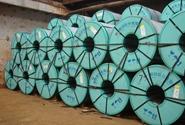Prices

January 18, 2016
AIIS View of November 2015 Steel Imports
Written by Sandy Williams
Each month the American Institute for International Steel (AIIS) provides an analysis of steel imports to the U.S. The following January 18 release describes imports for November.
Falls Church, VA. January 18, 2016. Steel imports plunged once again in November, dipping to a level more than one-third less than a year earlier.
The United States imported 2.35 million net tons of steel in November, nearly 24 percent less than in October and 36.4 percent less than in November 2014. Brazil was the largest provider of steel to the United States in October, but imports from that country fell 43.7 percent to 345,000 net tons the following month, 14 percent below the total for November 2014. Canada sent 435,000 net tons of steel south of the border in November, 6.4 percent less than the preceding month and 7.6 percent less than in November 2014. Imports from the European Union were nearly unchanged month-to-month at 393,000 net tons – though this was almost 45 percent less than in November 2014 – while imports from South Korea fell nearly 16 percent to 299,000 net tons, a cut of more than 36 percent from the same month the previous year.
From January through November 2015, steel imports totaled 36.34 million net tons, 10.7 percent less than during the same period in 2014. Imports from the European Union fell 13.4 percent, but that region was still the largest supplier of steel to the United States during the period at 5.59 million net tons. Canada followed at 5.36 million net tons, a decline of 3.6 percent, then Brazil at 5.09 million net tons, which, despite the November dip, was 10.7 percent more than in 2014.
Monthly semifinished imports fell 43.2 percent from November 2014 to November 2015, coming in at 430,000 net tons. Year-to-date, semifinished imports are down 30.2 percent at 6.92 million net tons.
This is clearly a difficult time for the entire steel industry. The worldwide economic slowdown has reduced demand, and even though the United States is faring somewhat better than others, steel consumption here is down because of falling oil prices and continued economic uncertainty. Domestic producers and steel importers both need a vibrant economy that will boost capital spending, and the availability of quality imported steel at good prices can help to engender that vibrancy. (AIIS Press Release)







